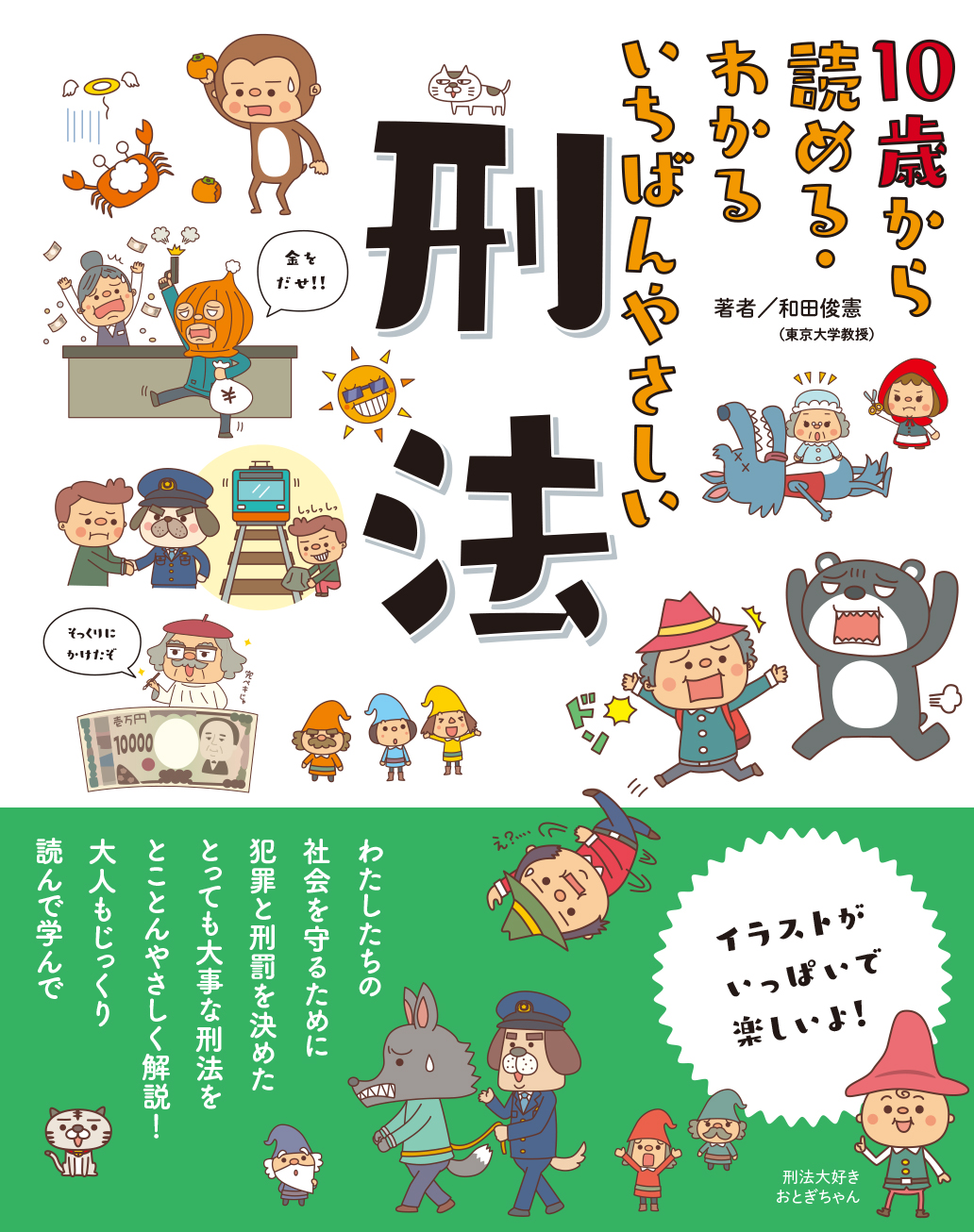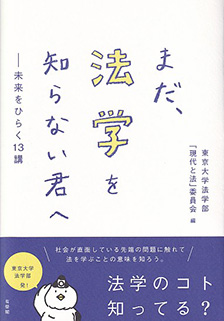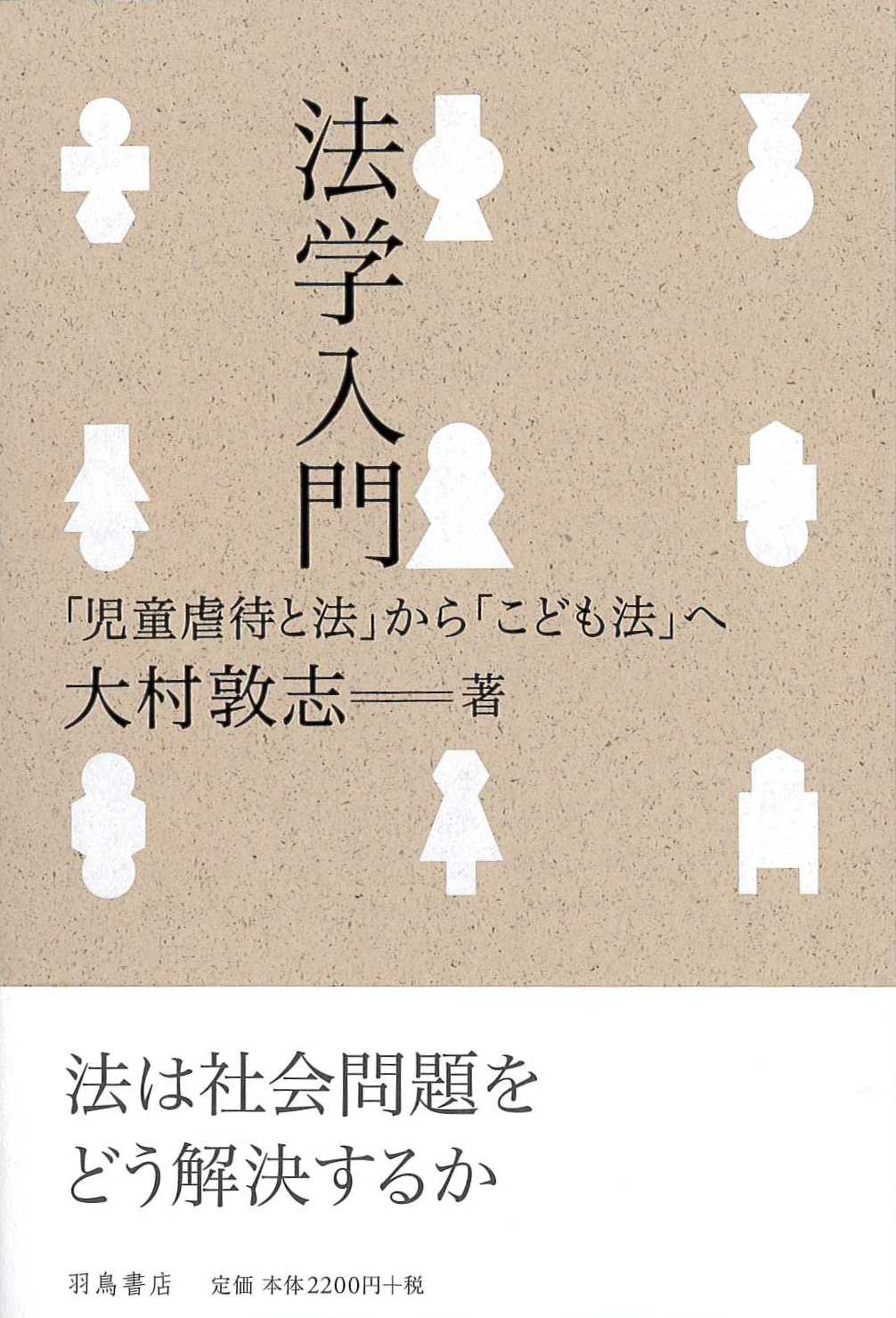
Title
10 Sai Kara Yomeru Wakaru Ichiban Yasashi Keiho (The easiest book on criminal law that 10-year-olds and over can read and understand)
Size
95 pages, B5 format
Language
Japanese
Released
October, 2022
ISBN
978-4-88574-466-2
Published by
Tokyo Shoten
Book Info
See Book Availability at Library
Japanese Page
This book is an introductory book on criminal law for the general public. Although it is intended for the general public, as the title of this book suggests “…10-year-olds and over can read and understand,” its main intended readers are children in upper elementary school. The aim is to introduce elementary school students to the world of criminal law. To this end, the book uses simple expressions and easy-to-understand concrete examples that even a 10-year-old can read. In addition, a clear feature of this book is its use of many fun illustrations that are appealing to children, so that it can be read like a picture book, and it uses flip-books and illustrations on many pages, even in places that are seemingly difficult to understand at first glance.
Even for the content, fairy tales are used from various angles to attract children, and “Santa and Satan’s Trespassing Cases” is based on an idea from an elementary school student. More in line with criminal law, it is different from usual criminal law textbooks with the focus on easy-to-imagine “dangerous” types of crime, a category that is similar to dinosaurs or insects for children, with a high proportion of violent crimes, public danger crimes, civil war and foreign aggression crimes, and so on. Furthermore, although it is difficult to deal with criminal minors (under 14 years old) in criminal law books aimed at readers who are elementary school students, this book does not hide the fact that elementary school students are not yet punishable, however the acquisition of criminal responsibility at the age of 14 is positioned as a turning point in life that should be aimed at with perfect readiness.
This book is not limited to elementary school students, as long as they are 10 years old or older, but is also a meaningful book for junior high and high school students. The aim is to help junior high and high school readers understand the value of criminal law. For example, in explaining why crime is wrong, rather than saying “What is wrong is wrong” it highlights the “violation of legal interests,” and emphasizes that crime is more than just a violation of rules or manners. And, it has included a wealth of concrete explanations with an awareness of legal interest, and has tried to mention the reasons for punishment for each type of crime as much as possible, and has unified the term of “violation of dignity” for highly topical sex crimes and the crime of defamation. On the other hand, care has been taken in handling acts that are academically important but are not punishable, and a policy has been adopted of not mentioning, for example, the fact that the temporary use of another person’s property is not theft and punishable. Furthermore, although this is a book on criminal law, in addition to providing a concise explanation of criminal procedures as stipulated by the Code of Criminal Procedure, the book also touches on constitutional values such as the principle of legality (legalism and non-retroactivity of punishment) and is designed to be related to the course content of civics in junior high schools.
As long as you are 10 years old or above, law students are not excluded from reading this book. Even if law students read this book, it may help them deepen their academic understanding. This book is organized from a different perspective to general criminal law textbooks, focusing on the similarity of acts rather than legal interests, and if a person who has already studied criminal law comes into contact with this book, it should lead to a three-dimensional understanding. In addition, students can also acquire knowledge about minor types of crimes that are not often covered in law school classes, such as civil war, instigation of foreign aggression, human trafficking, destruction of water supplies, and concealment of letters. And no matter what, the best way to learn anything is to explain it to a person who does not know about it, even if it is basic, when you try to explain it, you will realize that your understanding is not always sufficient, so I encourage law students to read it as if they were explaining criminal law to elementary school students. On the other hand, there are also highly specialized intellectual stimuli hidden in this book (such as the conflict of wills of the people with the right to residence in the crime of breaking and entering), so I would like the reader to try to think about such areas from an academic perspective.
Finally, like many children’s books these days, this book has the format of a children’s book, but it is also designed to be used by adults for relearning. The purpose is to give the reader, as well as elementary school students, who are the main intended audience, exposure to the world of criminal law. In fact, some people around me have said, “Criminal law seems difficult, but I might be able to read a picture book about it.” And I think that on opening this book, in some sense and degree, the understanding of criminal law will become widespread. Incidentally, I heard that the criminal division of a district court recommended this book as an introductory book on criminal law for citizen judges. This book, which has less than 100 pages and is richly illustrated, is suitable for quickly and easily understanding an overall picture of criminal law.
I hope that this book will broaden the scope of criminal law among a wide range of age groups. This will undoubtedly contribute also to the development of criminal law as an academic discipline.
(Written by WADA Toshinori, Professor, Graduate Schools for Law and Politics / 2023)



 Find a book
Find a book





